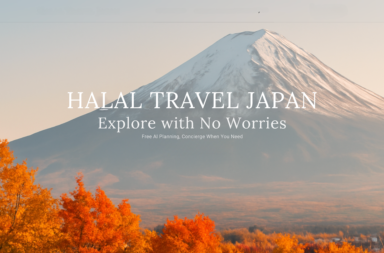This post is also available in: Indonesia
A Refreshing Gateway at Japan’s World Natural Heritage Sites
Written by: Swastika Kusumawati
Visiting nature is a good idea for adventure experience or soul healing. Japan is famous for its well-organized and untouched nature. No wonder, Japan’s nature has become one of the tourist destinations all over the world and some of them are recognized as World Natural Heritage Sites by UNESCO.
Today we will introduce 5 World Natural Heritage Sites in Japan for your next travel destination to Japan!
1. Yakushima Island
Yakushima Island is a small island in the part of Osumi Islands in Kagoshima Prefecture, south of Kyushu. This secluded island will bring you to another level of adventure for the cedar forest that contains Japan’s oldest living tree. There are 1000 or more years old cedar trees called Yakusugi (from yakushima and sugi, which means cedar in Japanese) that covered the forest.
In the forest, you can find Jomonsugi with 2000 ~ 7000 years old cedar tree, Shiratani Unsuikyo that inspired the making of the most popular anime from Studio Ghibli, Princess Mononoke, also Okotonaki waterfalls that has 88 meters height.
The island can be reached by airplane board to Yakushima airport from the major airports in Japan.
Shiratani Unsuikyo
For more information; https://whc.unesco.org/en/list/662
2. Shirakami-Sanchi
Shirakami-Sanchi is a mountainous area that straddles between Akita and Aomori Prefecture in northern Tohoku. This area has a “complete package” of rich nature to see, from beautiful waterfalls and great mountains to amazing lakes and hiking paths, including the largest remaining with the largest remaining virgin beech forest in East Asia.
The famous spots in Shirakami-Sanchi are Anmon falls with 50 meters tall and Aoike pond that have clear blue color water which changes depending on season and weather.
Don’t forget to climb the highest mountain in Shirakami Mountain Range, Mount Shirakamidake with 1,232 meters in height.
Shirakami-Sanchi area
Anmon Falls
Aoike Pond
For more information; https://whc.unesco.org/en/list/663/
https://www.japan.travel/en/spot/2139/
3. Shiretoko Peninsula
Shiretoko Peninsula is recognized as one of the most beautiful untouched national parks in Japan, located at the northeastern tip of Hokkaido. As one of the most remote regions in Japan, this place is become the home of Japan’s largest brown bear population and various wild animals such as killer whale (orca), spotted seal, white-tailed sea eagle, steller’s sea eagle, and many more.
For more information; https://whc.unesco.org/en/list/1193
https://www.env.go.jp/en/nature/nps/park/shiretoko/guide/view.html
4. Ogawara Islands
Ogawara Islands, also known as Bonin Islands, is a part of Tokyo Metropolitan City even though they have about 1,000 km in distance. The islands are located in the south of Tokyo which needs about 24 hours by ferry to reach.
The islands in the cluster of Ogawara Islands have unique naming that reminds us of naming in Japanese families such as Chichijima (Father Island), Hahajima (Mother Island), Anijima (Older Brother Island), and anejima (Older Sister Island). Only Chichijima and Hahajima are uninhabited.
Chichijima (Father Island) is famous for whale and dolphin watching. You can see Bottlenose Dolphins and Spinner Dolphins all year round and also swim with them!
Furthermore, you also can explore the sunken warships and feel the mystery of Chichijima Island’s sea. For those who love snorkeling and diving, Hahajima (Mother Island) has stunning under the sea creatures on Minamizaki beach.
Bottlenose Dolphins at Chichijima (Father Island)
Hahajima (Mother Island)
For more information; https://whc.unesco.org/en/list/1362
https://www.gotokyo.org/en/destinations/izu-and-ogasawara-islands/index.html
5. Amami Oshima Island, Tokunoshima Island, the northern part of Okinawa Island, and Iriomote Island
Amami Oshima Island and Tokunoshima Island, the northern part of Okinawa Island, and Iriomote Island are the newest UNESCO World Natural Heritage Sites that have been voted in 2021. Consisting of five components parts on four Islands in the Ryukyu island chain, the islands were selected for their unique animals and plants as well as a diverse ecosystem such as the endangered Amami Rabbit and endangered Ryukyu Long-haired Rat.
Each island has its special charm that can’t be missed. Amami Oshima Island is famous for the mangrove forest and clear beach, Tokunoshima Island for the uncrowded beaches and bullfighting event, the Yanbaru Region in the northern part of Okinawa Island for its subtropical forest and endemic wildlife, and Iriomote Island for its outdoor activities such as kayaking, snorkeling, hiking, etc.
Amami Oshima Island
Tokunoshima Island
Yanbaru Region in the northern part of Okinawa Island
Iriomote Island
For more information; https://whc.unesco.org/en/list/1574
See Also
5 Best World Cultural Heritage Sites You Should Visit in Japan!
3 Breathtaking Hidden Gems in Japan You Should Visit Once in a Lifetime


